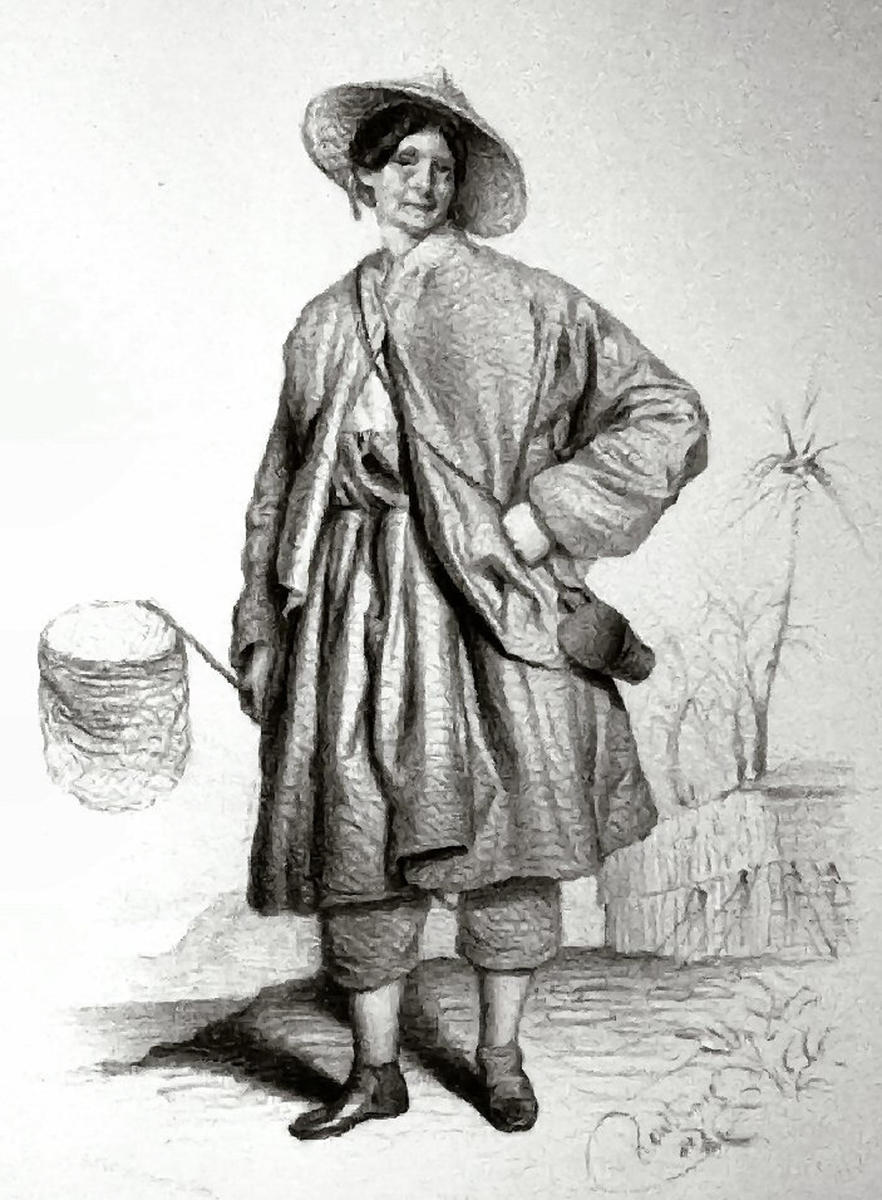Source

Source: Die Wiener Elegante (February 20, 1856), p. 42 of the Artistische Beilage. The History Collection / Alamy Stock Photo (Image ID: J8CYT4)
Ida Pfeiffer, née Reyer (1797–1858) was born into a middle-class family in Vienna and was afforded an education more like those of young men of her day. Pfeiffer achieved celebrity as a traveler, travel writer, and eventually an explorer in the late 1840s and 1850s. Travel-writing itself already broke the bounds of expectations for women in an era of enshrined belief in gender difference, a time in which women were thought to be better suited to interior domestic life than the more active exterior world of men. A significant number of women, however, still traveled and even published travel narratives. Over time, Pfeiffer took her travel-writing one step further—and this made her only more extraordinary—and pursued scientific research during her travels. She even penetrated regions previously unknown to Europeans. Interestingly, Pfeiffer went on to feature as the subject of an illustration by lithographer Adolf Dauthage (1825–1883) in the February 20, 1856, edition of the Die Wiener Elegante, a women’s fashion magazine. Dauthage depicted Pfeiffer not in fashionable attire but rather in active wear, her exploring outfit to be precise. He presented Pfeiffer to readers as vibrant and energetic, ready to collect butterflies or even more exotic creatures in a far-away, palm-shaded land. The image speaks to a certain and perhaps surprising flexibility with respect to gendered imagery in German-speaking Europe in the mid-nineteenth century.

Source: Die Wiener Elegante (February 20, 1856), p. 42 of the Artistische Beilage. The History Collection / Alamy Stock Photo (Image ID: J8CYT4)
© The History Collection / Alamy Stock Photo